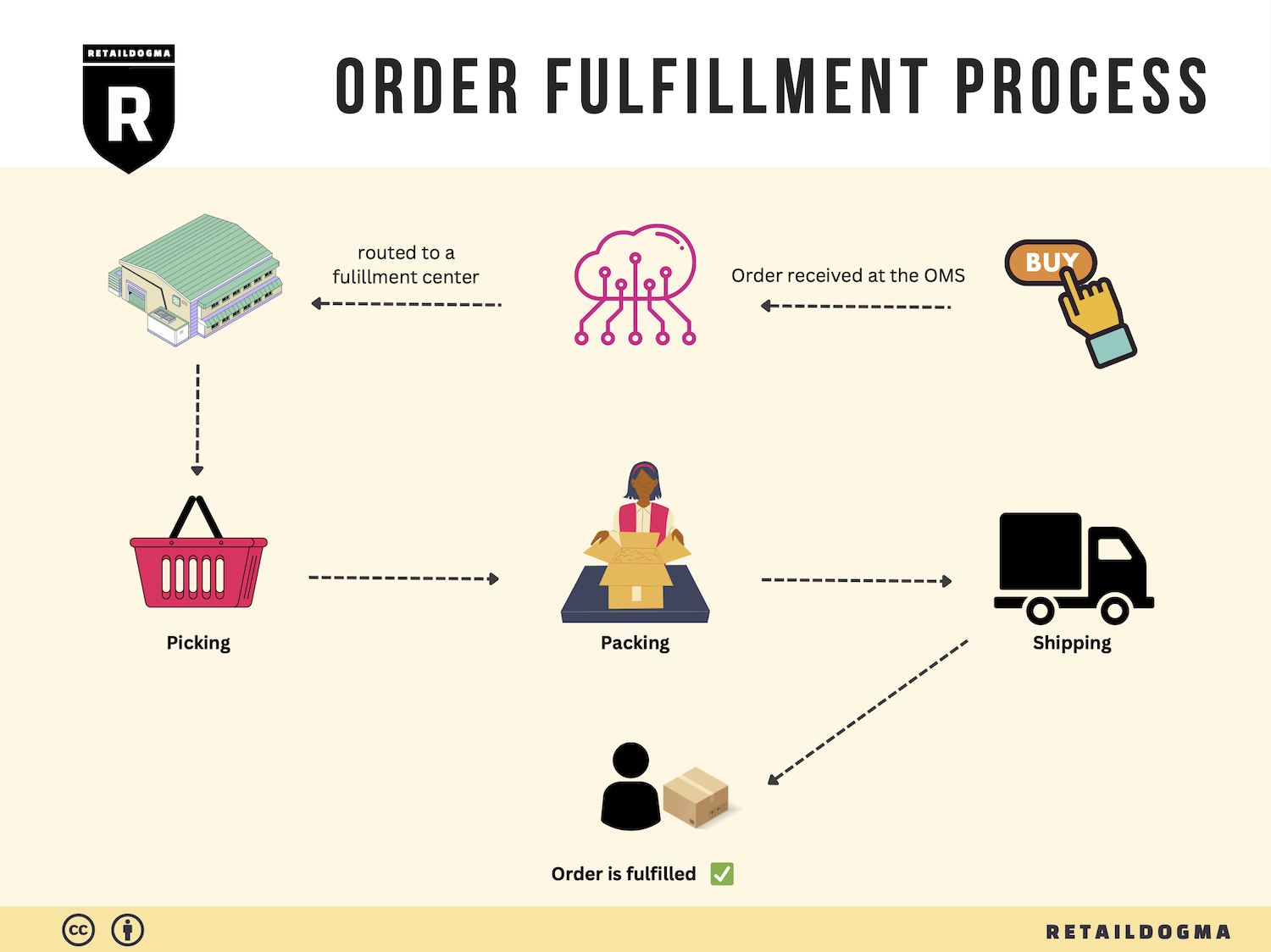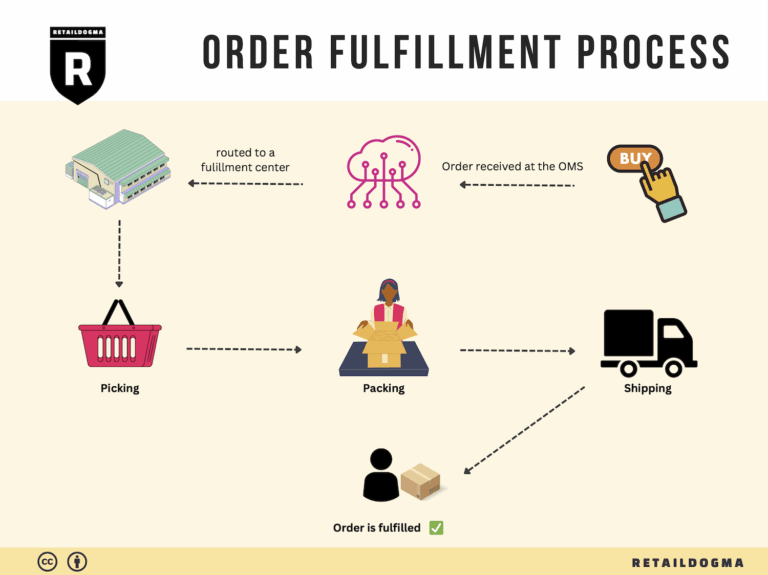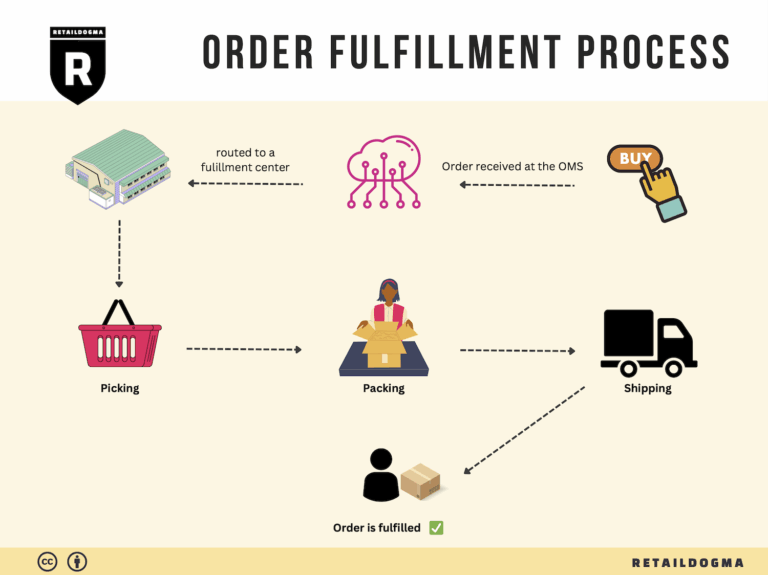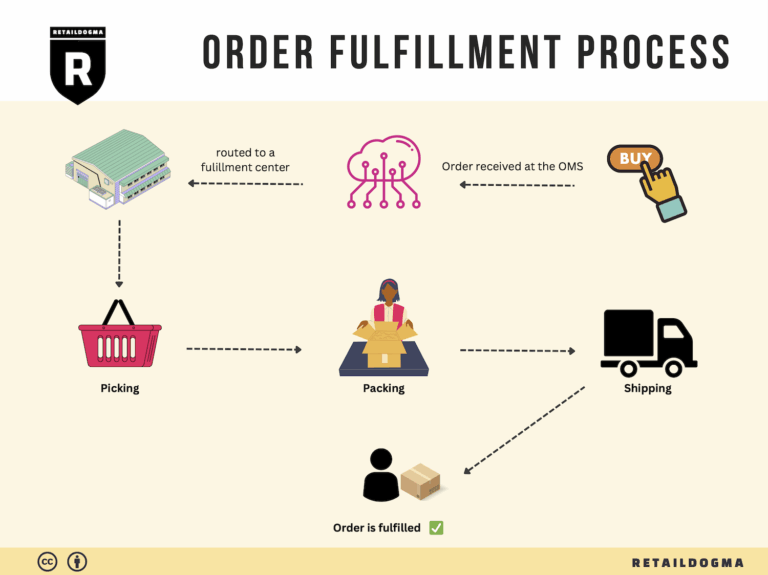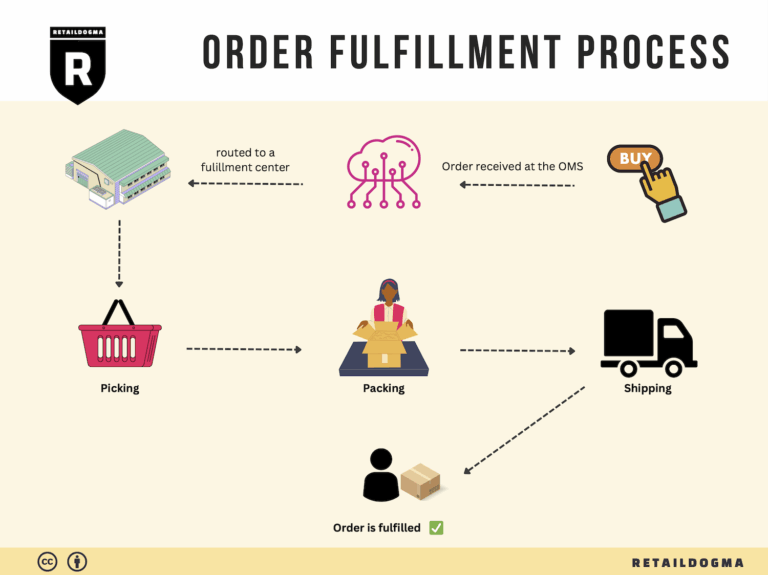Ecommerce Fulfillment Services: The Ultimate Guide (2025)
What is E-commerce Fulfillment? An Introduction for Growing Businesses
As your online business begins to grow, you may find yourself overwhelmed with the demands of packing and shipping orders. Managing logistics can quickly turn into a daunting task, diverting your focus from core business activities such as marketing and customer engagement. This is where effective e-commerce fulfillment comes into play.
Understanding Fulfillment
Fulfillment is the process of getting a product from your inventory to your customer’s doorstep. It encompasses everything from receiving orders and picking products to packing them and shipping them out. For many growing businesses, this process can become complex and resource-intensive, especially as order volumes increase. The right fulfillment strategy can not only streamline your operations but also enhance customer satisfaction by ensuring timely deliveries.
What This Guide Covers
In this comprehensive guide, we will explore various e-commerce fulfillment models, including Third-Party Logistics (3PL) and Fulfillment by Amazon (FBA). Each model has its strengths and weaknesses, and understanding these can help you determine which option best aligns with your business goals.
We will also delve into the core services offered by fulfillment partners. These services typically include inventory management, order processing, shipping, and returns handling. Knowing what to expect can aid you in selecting a partner that meets your specific needs.
Choosing the right fulfillment partner is crucial for your business’s success. We will provide practical tips on how to evaluate potential partners based on factors such as scalability, technology integration, and customer service.
Pricing is another critical aspect of fulfillment that can significantly impact your bottom line. We will break down the typical pricing structures and what to consider when budgeting for fulfillment services. Understanding these costs will empower you to make informed decisions that align with your financial objectives.
Empowering Smart Decisions
The ultimate goal of this guide is to empower e-commerce business owners, operations managers, and entrepreneurs with the knowledge to make smart decisions regarding their logistics and fulfillment strategies. By understanding the landscape of e-commerce fulfillment, you can optimize your operations, reduce overhead costs, and ultimately enhance customer satisfaction, driving growth and success for your business.
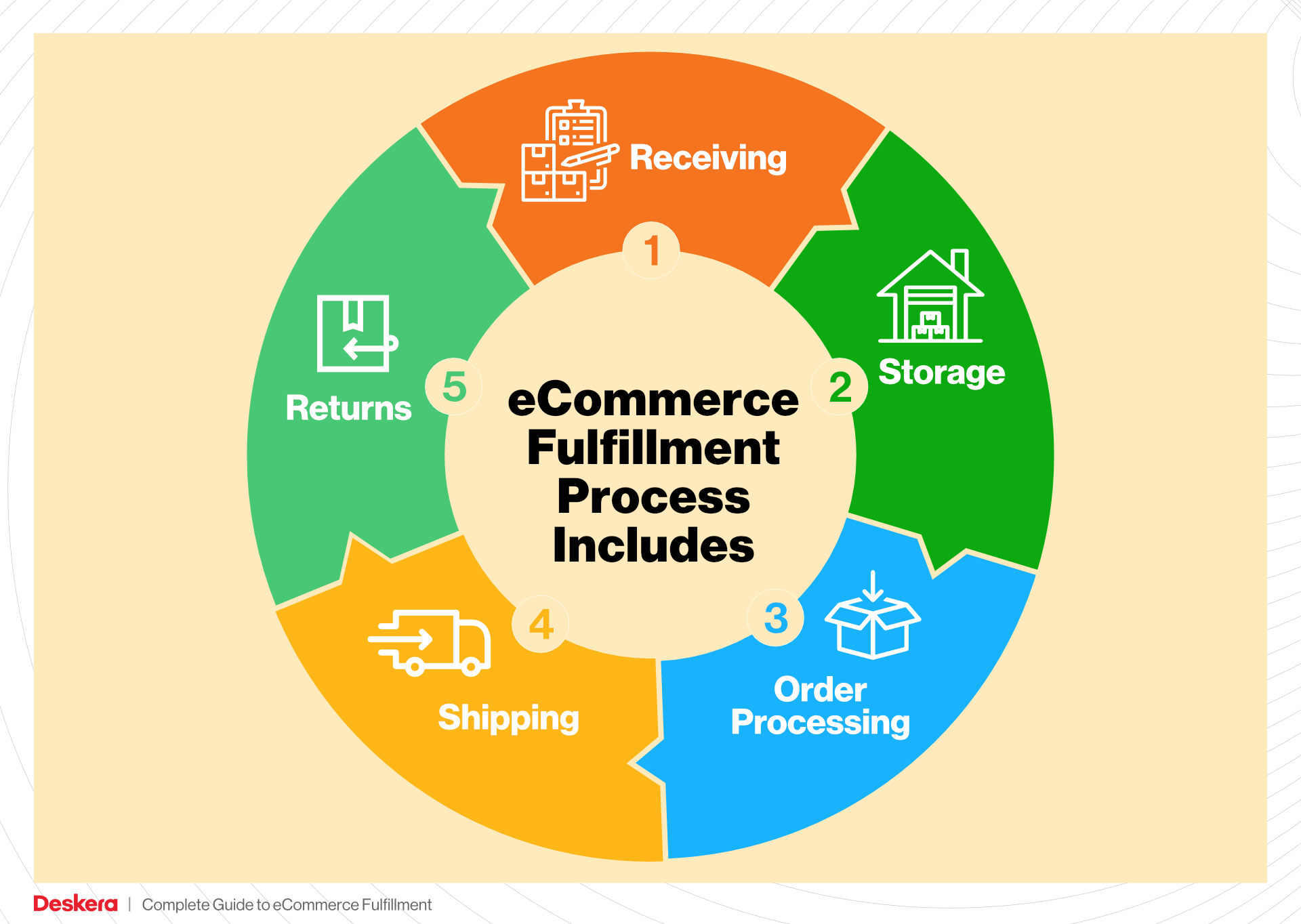
What You’ll Learn In This Guide
- What is E-commerce Fulfillment? An Introduction for Growing Businesses
- The Order Fulfillment Process: From ‘Buy’ Button to Customer’s Door
- Comparing Fulfillment Models: In-House vs. 3PL vs. Dropshipping
- A Deep Dive into Amazon FBA: Pros, Cons, and Who It’s For
- Core Services Offered by Fulfillment Centers
- How to Choose a Fulfillment Partner: A 6-Point Checklist
- Understanding Fulfillment Pricing: A Breakdown of Common Fees
- Frequently Asked Questions (FAQs) about Fulfillment
- Conclusion: Is Outsourcing Fulfillment the Right Move for Your Business?
- Important Disclaimer
The Order Fulfillment Process: From ‘Buy’ Button to Customer’s Door
1. Receiving Inventory
The first step in the order fulfillment process is receiving inventory. This involves the intake of goods into the fulfillment center, where they are checked against purchase orders for accuracy and quality. Each item is assigned a Stock Keeping Unit (SKU), which is a unique identifier that streamlines inventory management.
Importance: Accurate receiving is crucial for maintaining inventory integrity. Any discrepancies at this stage can lead to stockouts or overstocking, impacting customer satisfaction and operational efficiency. An effective receiving process ensures that the right products are available for order fulfillment.
Key Term: SKU (Stock Keeping Unit) – a unique identifier used to track inventory and manage stock levels.
2. Warehouse Storage
Once the inventory is received and verified, it is stored in the warehouse. Products are organized based on various strategies, such as by category, size, or sales velocity. This step often employs a warehouse management system (WMS) to optimize space and facilitate easy retrieval.
Importance: Proper storage is essential for maximizing warehouse efficiency and minimizing retrieval times. An organized warehouse reduces the risk of errors during the picking process and allows for quicker access to high-demand items. This can lead to faster order processing times, which is critical in today’s fast-paced e-commerce environment.

Key Term: Warehouse Management System (WMS) – software that helps manage warehouse operations, including inventory tracking, storage location management, and order processing.
3. Order Picking
Order picking is the process of selecting items from the warehouse to fulfill customer orders. This can be done using various methods, including single order picking, batch picking, or wave picking. Pick lists, which detail the items and quantities needed for each order, guide workers through this stage.
Importance: Efficient order picking directly impacts fulfillment speed and accuracy. The faster and more accurately items are picked, the quicker orders can be processed and shipped. A streamlined picking process also reduces labor costs and improves overall productivity.
Key Term: Pick List – a document or digital tool that outlines the items to be picked for fulfilling a specific order, including their locations in the warehouse.
4. Order Packing
After the items are picked, they are brought to the packing station. Here, products are checked for quality and packaged securely for shipment. Packaging materials should be selected based on the type of product and the shipping method to ensure items arrive intact. Additionally, packing slips and shipping labels are generated at this stage.
Importance: Effective packing is vital for protecting products during transit and ensuring customer satisfaction. Properly packed orders reduce the likelihood of returns due to damage and help maintain a positive brand reputation. Moreover, efficient packing processes can lead to reduced shipping costs and improved delivery times.
Key Term: Packing Slip – a document included with the shipment that lists the items in the package, serving as a receipt for the customer.
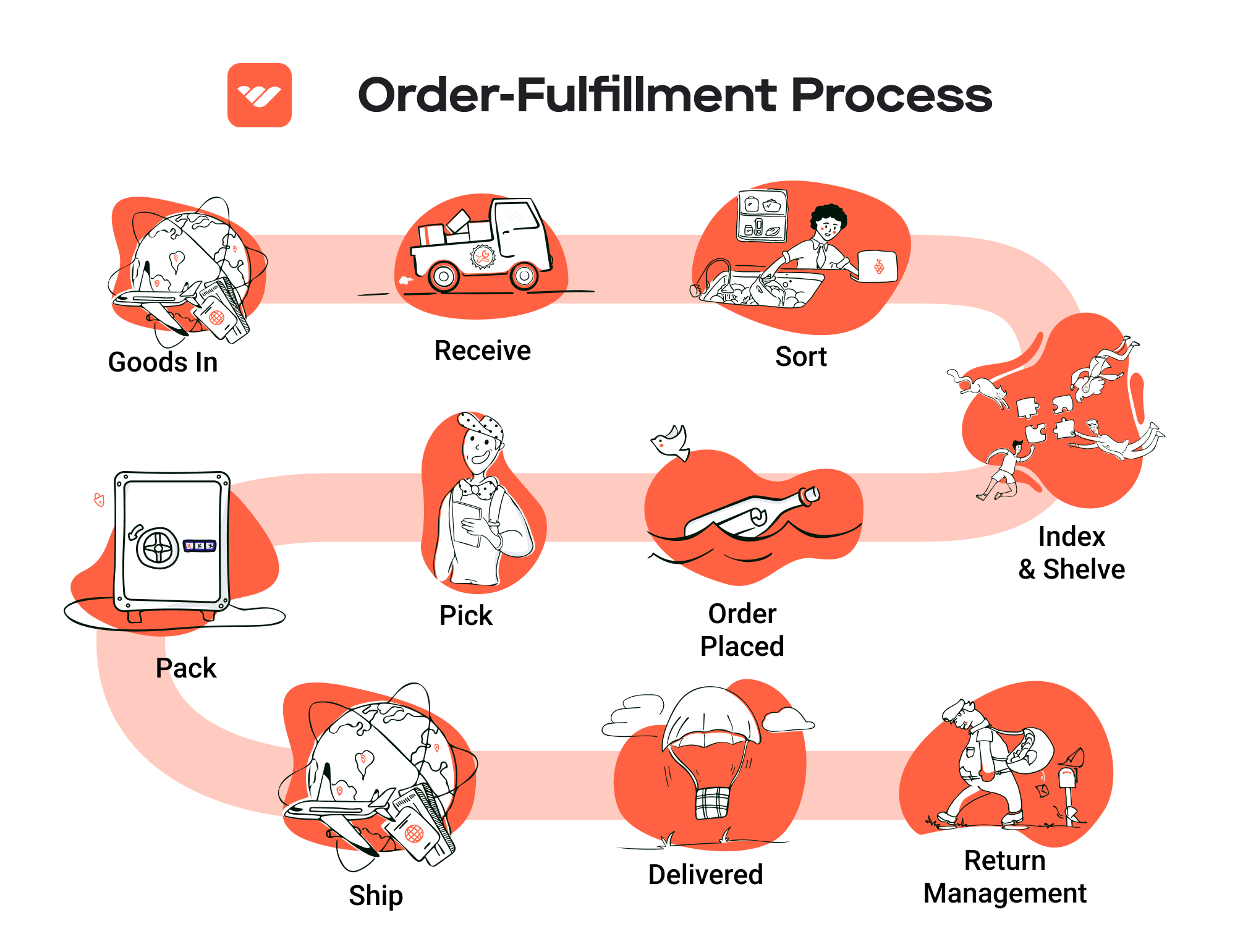
5. Shipping & Delivery
The final step in the order fulfillment process is shipping and delivery. Once packed, orders are transferred to the shipping department, where they are scheduled for pickup by carriers. Businesses must choose reliable shipping partners to ensure timely delivery. Real-time tracking information is often provided to customers, enhancing the post-purchase experience.
Importance: Timely shipping and delivery are crucial for customer satisfaction and loyalty. Delays in this phase can lead to dissatisfaction and potential loss of future sales. Additionally, providing tracking information keeps customers informed and enhances their experience, leading to greater trust in your brand.
Key Term: Shipping Carrier – a company responsible for the transportation of goods from the fulfillment center to the customer, such as UPS, FedEx, or USPS.
By understanding and optimizing each step of the order fulfillment process, e-commerce businesses can improve operational efficiency, enhance customer satisfaction, and ultimately scale their logistics successfully.
Comparing Fulfillment Models: In-House vs. 3PL vs. Dropshipping
Fulfillment Model Comparison
| Model | Who Handles Inventory | Best For (Business Stage) | Key Advantage | Key Disadvantage |
|---|---|---|---|---|
| In-House Fulfillment | The business itself | Established businesses | Complete control over inventory and processes | High overhead costs and operational complexity |
| Third-Party Logistics (3PL) | A third-party provider | Growing businesses | Scalability and reduced operational burden | Less control over inventory and fulfillment speed |
| Dropshipping | Supplier or manufacturer | Startups or small businesses | Low upfront investment and minimal risk | Lower profit margins and dependency on suppliers |
In-House Fulfillment
In-house fulfillment refers to managing the entire logistics process within the business itself. This includes everything from inventory management to order processing, packing, and shipping. Companies that opt for in-house fulfillment typically have a dedicated warehouse or fulfillment center where they store their products. This model is best suited for established businesses that have a steady volume of orders and can afford the operational complexities involved.
The key advantage of in-house fulfillment is the complete control it offers over the inventory and fulfillment processes. Businesses can directly oversee quality control, packaging, and shipping speed, ensuring that their brand standards are consistently met. However, this level of control comes with a significant downside: high overhead costs. Businesses need to invest in warehousing, staff, and technology to manage the fulfillment process efficiently. Additionally, the complexities of logistics can divert focus from core business activities, making it essential for companies to weigh the pros and cons carefully.
Third-Party Logistics (3PL)
Third-party logistics (3PL) providers handle logistics functions on behalf of businesses. This model is particularly beneficial for growing companies that need to scale their operations without the burden of managing a warehouse or fulfillment center themselves. 3PL providers take care of warehousing, inventory management, order fulfillment, and shipping, allowing businesses to focus on their core competencies.
The key advantage of using a 3PL is scalability. As order volumes increase, businesses can easily adjust their logistics operations by leveraging the resources of their 3PL partner. This reduces the operational burden on the business and allows for faster adjustments to market demands. However, a significant disadvantage is the loss of control over inventory and fulfillment processes. Businesses may face challenges with communication, and discrepancies in service levels can affect customer satisfaction. It is crucial for businesses to choose a reputable 3PL provider and establish clear communication channels to mitigate these risks.
Dropshipping
Dropshipping is a fulfillment model where the retailer does not hold inventory. Instead, when an order is placed, the retailer purchases the item from a third party (typically a manufacturer or wholesaler) who then ships it directly to the customer. This model is particularly attractive to startups and small businesses that want to minimize upfront investment and operational risk.
The primary advantage of dropshipping is that it requires very little capital to start. Entrepreneurs can offer a wide range of products without the need to purchase inventory upfront, making it a low-risk option for entering the e-commerce space. However, this model also has notable downsides, including lower profit margins and a dependency on suppliers for inventory and shipping. Retailers must rely on their suppliers to maintain stock levels and fulfill orders accurately and on time. Any delays or issues on the supplier’s end can lead to dissatisfied customers and damage to the retailer’s reputation. As such, businesses considering dropshipping should conduct thorough research on potential suppliers and maintain a focus on customer service to navigate these challenges effectively.
Conclusion
Choosing the right fulfillment model is crucial for scaling an e-commerce business. Each model—In-House Fulfillment, 3PL, and Dropshipping—has its own set of advantages and disadvantages. Understanding these can help business owners and operations managers make informed decisions that align with their growth strategies and operational capabilities. As they evolve, businesses may find that a hybrid approach, leveraging multiple fulfillment models, can offer the flexibility and efficiency needed to meet changing market demands.
A Deep Dive into Amazon FBA: Pros, Cons, and Who It’s For
What is Fulfillment by Amazon (FBA)?
Fulfillment by Amazon (FBA) is a service offered by Amazon that allows sellers to store their products in Amazon’s fulfillment centers. Amazon takes care of storage, packaging, shipping, and customer service on behalf of the seller. This means that when a customer orders a product, Amazon handles the logistics, ensuring that the product is delivered promptly. Sellers can leverage Amazon’s vast distribution network and customer base while focusing on other aspects of their business.
How FBA Works
-
Setting Up: Sellers create an Amazon seller account and choose to enroll in FBA. They then prepare their products according to Amazon’s guidelines and ship them to an Amazon fulfillment center.
-
Storage: Once the products arrive at the fulfillment center, they are stored in Amazon’s warehouse until sold. Amazon manages inventory and tracks stock levels.
-
Order Fulfillment: When a customer places an order for a product listed under FBA, Amazon picks, packs, and ships the item directly to the customer. This includes handling returns and customer inquiries.
-
Customer Service: Amazon provides customer service for FBA orders, allowing sellers to benefit from Amazon’s reputation for customer support.
-
Payment: After the order is fulfilled, Amazon deducts fees for using FBA and transfers the remaining sales revenue to the seller’s account.
Pros of Using FBA
Prime Eligibility
One of the standout benefits of using FBA is that products become eligible for Amazon Prime, which can significantly increase visibility and sales. Prime members are often willing to pay more for faster shipping, making FBA a compelling choice for sellers looking to tap into this lucrative market.
Customer Trust
Products fulfilled by Amazon carry a level of trust and credibility. Customers are more likely to purchase items that are backed by Amazon’s customer service and return policies. This can lead to higher conversion rates for FBA sellers.
Multi-Channel Fulfillment
FBA is not limited to Amazon’s marketplace. Sellers can also use FBA to fulfill orders from other sales channels, such as their own websites or other e-commerce platforms. This flexibility can streamline operations and reduce the complexity of managing multiple fulfillment processes.
Scalability
FBA allows sellers to scale their businesses quickly without the need for significant upfront investment in warehousing or logistics. As demand grows, sellers can simply send more inventory to Amazon, allowing for rapid expansion.
Inventory Management
Amazon provides tools and analytics to help sellers manage their inventory effectively. This includes insights into sales trends, inventory turnover, and alerts for restocking, making it easier to maintain optimal stock levels.
Cons of Using FBA
High Fees
One of the main drawbacks of FBA is the associated costs. Amazon charges fees for storage, fulfillment, and other services, which can add up quickly. Sellers need to carefully calculate their margins to ensure profitability, especially for low-priced items.
Strict Inventory Rules
FBA has strict inventory management rules, including limits on storage space and requirements for product labeling and packaging. Sellers must adhere to these guidelines to avoid penalties or removal of their inventory from Amazon’s warehouses.
Commingling Risks
FBA products can be commingled, meaning that inventory from multiple sellers may be stored together. This can lead to issues with product quality, as sellers may receive returns or complaints about items that are not theirs. Sellers need to be aware of this risk and consider using the “Stickered Inventory” option to avoid commingling.
Dependency on Amazon
Using FBA means relying heavily on Amazon for fulfillment and customer service. Any changes in Amazon’s policies, fees, or logistics can have a significant impact on a seller’s business. Additionally, sellers may face challenges if they want to transition away from FBA in the future.
Competitive Pressure
Since FBA makes it easier for anyone to sell on Amazon, the competition can be fierce. Sellers must invest in marketing and differentiation strategies to stand out in a crowded marketplace.
Who is FBA Best For?
FBA is best suited for sellers who:
-
Have High Sales Volume: Businesses with a consistent and high sales volume can benefit from the economies of scale that FBA offers, making it easier to manage logistics and fulfillment.
-
Sell Physical Products: FBA is ideal for sellers of physical products, particularly those that are small and lightweight, as these typically incur lower storage and shipping fees.
-
Desire Prime Eligibility: Sellers who want to attract Amazon Prime customers and leverage the trust associated with Amazon’s fulfillment services will find FBA advantageous.
-
Lack Fulfillment Resources: Small to medium-sized businesses that do not have the resources to manage their own warehousing and logistics will find FBA a practical solution to scale their operations without significant upfront investment.
-
Want to Focus on Growth: Entrepreneurs looking to concentrate on marketing and product development rather than logistics will benefit from the time-saving aspects of FBA.
In summary, while FBA offers numerous advantages for e-commerce businesses, it is essential to weigh the costs and challenges. Careful consideration of your business model, target market, and growth strategy will determine if FBA is the right fit for your business.
Core Services Offered by Fulfillment Centers
Inventory Management & Warehousing
Inventory management and warehousing are foundational services provided by fulfillment centers, enabling e-commerce businesses to store their products efficiently and manage stock levels effectively. Fulfillment centers utilize sophisticated inventory management systems that track stock levels in real-time, providing businesses with insights into inventory turnover rates, re-order points, and stock availability.
Benefits:
1. Space Optimization: Fulfillment centers often have vast storage facilities that allow businesses to store larger quantities of products without the overhead costs associated with maintaining a dedicated warehouse.
2. Real-Time Data: With advanced inventory management software, businesses can access real-time data, allowing for better forecasting and decision-making regarding inventory needs.
3. Reduced Risk of Stockouts: By maintaining optimal inventory levels, fulfillment centers help prevent stockouts, ensuring that products are available for customers when they want them, which ultimately leads to higher customer satisfaction and retention.
Pick and Pack Services
Pick and pack services are crucial components of the fulfillment process. This service involves selecting (or “picking”) the ordered items from the warehouse and packing them for shipment. Fulfillment centers employ organized systems to streamline this process, utilizing barcode scanning, automated picking systems, and trained personnel to ensure accuracy and efficiency.
Benefits:
1. Increased Efficiency: By outsourcing pick and pack services to a fulfillment center, businesses can focus on their core operations while ensuring that orders are processed quickly and accurately.
2. Scalability: As order volumes fluctuate, fulfillment centers can easily scale their pick and pack operations to meet demand, allowing businesses to grow without the need for significant investment in labor or infrastructure.
3. Error Reduction: Advanced technology and trained staff help minimize errors in order fulfillment, which reduces the likelihood of returns and enhances overall customer satisfaction.
Kitting and Assembly
Kitting and assembly services involve grouping multiple products into a single package or assembling components into a finished product before shipping. This is particularly beneficial for businesses that sell products that are often bundled together or require assembly before use.
Benefits:
1. Enhanced Customer Experience: By offering pre-assembled kits or bundled products, businesses can provide customers with a more convenient shopping experience, which can lead to increased sales and customer loyalty.
2. Cost Efficiency: Outsourcing kitting and assembly to fulfillment centers can reduce labor costs and time associated with these processes, allowing businesses to allocate resources more effectively.
3. Customizability: Fulfillment centers can accommodate specific kitting requests, enabling businesses to tailor their offerings based on customer preferences or seasonal demands.
Returns Management (Reverse Logistics)
Returns management, also known as reverse logistics, is an essential service that deals with the process of handling returned products. Fulfillment centers streamline the returns process, making it easy for customers to return items and for businesses to manage these returns efficiently.
Benefits:
1. Simplified Process: Fulfillment centers manage all aspects of returns, from processing return requests to inspecting and restocking items. This simplifies the process for businesses, allowing them to focus on growth rather than logistics.
2. Data Insights: By analyzing return data, fulfillment centers provide valuable insights into customer behavior and product performance, helping businesses identify trends and improve product offerings.
3. Improved Customer Satisfaction: A hassle-free return process can significantly enhance customer satisfaction and loyalty, as customers are more likely to shop with businesses that have easy return policies.
In conclusion, the core services offered by fulfillment centers, including inventory management, pick and pack services, kitting and assembly, and returns management, play a vital role in the efficiency and scalability of e-commerce operations. By leveraging these services, businesses can enhance their operational capabilities, improve customer satisfaction, and ultimately drive growth in a competitive marketplace.
How to Choose a Fulfillment Partner: A 6-Point Checklist
Location & Warehouse Network
Importance: The geographical location of your fulfillment partner can significantly affect shipping times, costs, and customer satisfaction. A partner with a robust network of warehouses can help you reach your customers faster and more efficiently.
Questions to Ask:
– Where are the fulfillment centers located, and how does this align with my customer base?
– How many warehouses do you operate, and what is the average distance to major shipping hubs?
– Can you provide insights into your delivery times for different regions?
Technology & Integrations
Importance: Modern e-commerce relies heavily on technology for inventory management, order processing, and customer relationship management. A fulfillment partner that offers advanced technology and seamless integrations can help streamline operations and improve accuracy.
Questions to Ask:
– What technology platforms do you use for order management, inventory tracking, and reporting?
– How easily can your systems integrate with my existing e-commerce platform (e.g., Shopify, WooCommerce, Amazon)?
– Do you offer real-time tracking for shipments, and how is this information communicated to customers?
Specializations (e.g., Cold Storage, Oversized Items)
Importance: Depending on your product range, you may require specialized services such as cold storage for perishable goods or handling oversized items. Choosing a partner with the right expertise can prevent mishandling and ensure compliance with industry regulations.
Questions to Ask:
– Do you have the capability to handle my specific product requirements (e.g., temperature-sensitive items, fragile goods)?
– What certifications do you hold for specialized services (e.g., FDA compliance for food items)?
– Can you provide case studies or references from similar businesses that utilize your specialized services?
Scalability & Capacity
Importance: As your business grows, your fulfillment needs will change. A partner that can scale operations quickly will help you avoid disruptions during peak seasons or when launching new products.
Questions to Ask:
– How do you manage fluctuations in order volume, especially during peak seasons like holidays or sales events?
– What is your current capacity, and how quickly can you scale up if my order volume increases?
– Are there any restrictions on the types of products or quantities you can handle as we grow?
Pricing and Contracts
Importance: Understanding the pricing structure and contractual obligations is crucial for maintaining profitability. Transparent pricing helps you budget effectively and avoid hidden costs.
Questions to Ask:
– Can you provide a detailed breakdown of your pricing structure, including storage fees, picking fees, shipping costs, and any other potential charges?
– What are the terms of the contract, and are there any long-term commitments required?
– How do you handle price adjustments, and what notice will you provide before any changes take effect?
Customer Support & Reviews
Importance: Effective customer support can make a significant difference in resolving issues quickly and maintaining a good relationship with your fulfillment partner. Additionally, reviews from other businesses can provide insight into the partner’s reliability and service quality.
Questions to Ask:
– What customer support channels do you offer (e.g., phone, email, live chat), and what are your response times?
– Can you provide references or testimonials from current clients regarding their experiences with your service?
– How do you handle issues or complaints, and what is your escalation process for urgent matters?
Conclusion
Choosing the right fulfillment partner is a critical decision for any e-commerce business. By carefully considering the points outlined in this checklist and asking the right questions, you can identify a partner that aligns with your operational needs and growth ambitions. Remember, a well-chosen fulfillment partner can enhance your customer experience, streamline your logistics, and ultimately support your business’s success as it scales.
Understanding Fulfillment Pricing: A Breakdown of Common Fees
Initial Setup Fees
Initial setup fees are typically charged when you first engage with a fulfillment service. This fee can vary significantly based on the provider but generally covers the costs associated with establishing your account, integrating your e-commerce platform, and onboarding your products into their system. The setup process may include creating custom packaging, configuring inventory management systems, and training your team on how to use the fulfillment center’s software.
To calculate initial setup fees, providers often consider the complexity of your inventory and the level of customization required for your fulfillment operations. For instance, if your business has a large catalog of products or requires specialized handling, you might incur higher setup costs. Always ask for a detailed breakdown of what is included in the setup fee to avoid unexpected expenses.
Receiving Fees
Receiving fees apply when your inventory arrives at the fulfillment center. These fees cover the labor and resources used to unload, inspect, and store your products. The calculation typically depends on the volume of goods being received.
Providers may charge a flat fee per shipment or a variable fee based on the total weight or number of pallets. For example, if you send a truckload of goods, the fee may be lower per unit compared to smaller shipments due to economies of scale. Ensure you understand how receiving fees are structured, as this can influence your overall logistics costs.
Storage Fees (per pallet/bin)
Storage fees are charged for the space your inventory occupies within the fulfillment center. These fees can be assessed monthly and are generally calculated on a per-pallet or per-bin basis. The cost can vary depending on the size of the pallet, the duration of storage, and the location of the fulfillment center.
For instance, if you store seasonal items that you won’t sell until later in the year, you might be looking at prolonged storage fees. Some fulfillment centers offer tiered pricing based on the volume of inventory stored, which can provide savings if you have a larger footprint. Always consider how storage needs fluctuate throughout the year and negotiate terms that accommodate seasonal inventory changes.
Pick & Pack Fees (per item/order)
Pick and pack fees are charged for the labor involved in selecting items from storage and preparing them for shipment. This fee is often calculated per item or per order, depending on the fulfillment provider’s pricing structure.
For example, if a customer orders three items, the provider will charge a pick fee for each item picked from the shelf, plus a packing fee for preparing the order. Some fulfillment centers offer flat rates for orders with a certain number of items, which can be beneficial for businesses with larger average order sizes. Understanding how these fees are calculated can help you estimate your fulfillment costs more accurately.
Shipping Fees
Shipping fees are one of the most significant costs associated with fulfillment. These fees are based on the weight and dimensions of the packages, the shipping method chosen (standard, expedited, etc.), and the destination. Fulfillment centers usually partner with various carriers to provide competitive shipping rates.
To calculate shipping fees, you should consider both the cost of the carrier and any additional handling fees imposed by the fulfillment center. It’s essential to analyze your shipping strategy and negotiate rates with your provider to ensure you are getting the best possible deal. Additionally, many providers offer discounted rates for high shipping volumes, so consider your shipping patterns when discussing fees.
Tips for Getting an Accurate Quote
-
Be Transparent About Your Needs: Clearly communicate your business model, product types, and expected order volumes. The more information you provide, the more accurate the quote will be.
-
Request Detailed Pricing: Ask for a comprehensive breakdown of all potential fees, including any hidden costs that may not be immediately apparent.
-
Inquire About Discounts: Many fulfillment centers offer tiered pricing or discounts based on volume. Make sure to ask about these opportunities to save on costs.
-
Consider Long-Term Contracts: If you expect to grow your business, discuss long-term contracts that may offer better rates compared to month-to-month agreements.
-
Review Regularly: As your business scales, regularly review your fulfillment agreements to ensure they still meet your operational needs and budget constraints.
By understanding these common fees and how they are calculated, you can better manage your fulfillment costs and make informed decisions that support your e-commerce growth.
Frequently Asked Questions (FAQs) about Fulfillment
1. What is the ONT9 Amazon Fulfillment Center?
The ONT9 Amazon Fulfillment Center is one of Amazon’s distribution facilities located in Redlands, California. It plays a critical role in the company’s logistics network, handling the storage, packing, and shipping of products ordered through Amazon’s platform. This facility is equipped with advanced technology and processes designed to optimize efficiency and speed in order fulfillment.
2. How does the fulfillment process work at ONT9?
At ONT9, the fulfillment process typically involves receiving products from suppliers, storing them in designated areas, picking items when orders are placed, packing them for shipment, and finally dispatching them to customers. The entire process is supported by automated systems and human labor to ensure timely and accurate order fulfillment.
3. What is the difference between a warehouse and a fulfillment center?
A warehouse is primarily a storage facility where goods are kept until they are needed, while a fulfillment center is specifically designed to process and ship orders directly to customers. Fulfillment centers focus on speed, efficiency, and order accuracy, often incorporating advanced technology and logistics practices to streamline operations.
4. What is a 3PL, and how does it relate to fulfillment?
A 3PL, or third-party logistics provider, is a company that offers logistics services to businesses, including warehousing, transportation, and fulfillment. Utilizing a 3PL can help e-commerce businesses scale operations by outsourcing their logistics needs, allowing them to focus on core business activities like marketing and product development.
5. How much do fulfillment services cost?
The cost of fulfillment services can vary widely based on factors such as order volume, storage requirements, and service level agreements. Typically, businesses can expect to pay a combination of storage fees (based on the space occupied) and fulfillment fees (charged per order or per item shipped). It’s essential to compare pricing structures from different fulfillment providers to find the best fit for your business needs.
6. What are the labor practices at ONT9?
Labor practices at ONT9 have come under scrutiny, particularly regarding productivity quotas and employee treatment. Recent reports indicate that Amazon faced fines for allegedly not informing employees of their production targets. This highlights the importance of transparency in labor practices, as well as ensuring worker safety and well-being.
7. What technology is used in the ONT9 Fulfillment Center?
ONT9 employs a range of technologies to enhance its fulfillment processes, including automated conveyor systems, robotics for picking and packing, and sophisticated inventory management software. These technologies aim to improve efficiency, accuracy, and speed in order fulfillment.
8. What are the injury rates like at ONT9?
In recent assessments, ONT9 reported serious injury rates that were higher than the California warehouse average, indicating potential workplace safety concerns. The average serious injury rate across California warehouses was 4.8 per 100 workers, while ONT9 reported 8.9 serious injuries per 100 workers. This data emphasizes the need for continuous improvement in safety protocols and labor practices.
9. How can businesses benefit from using ONT9 for fulfillment?
Businesses can benefit from using the ONT9 Fulfillment Center by gaining access to Amazon’s extensive logistics network, which can enhance shipping speed and reliability. Additionally, partnering with Amazon for fulfillment can help businesses scale rapidly, as they can leverage Amazon’s technology and expertise in handling large volumes of orders.
10. What should businesses consider when choosing a fulfillment center?
When selecting a fulfillment center, businesses should consider several factors, including location, technology capabilities, service offerings, pricing structure, and the provider’s track record for reliability and safety. It’s also crucial to evaluate how well the fulfillment center can integrate with your existing e-commerce systems and meet your specific operational needs.
Conclusion: Is Outsourcing Fulfillment the Right Move for Your Business?
Evaluating the Benefits of Outsourcing Fulfillment
Outsourcing your fulfillment process can be a game-changer for e-commerce businesses looking to scale efficiently. One of the primary benefits is time savings. By partnering with a fulfillment service, you free up invaluable hours that can be redirected towards growing your brand, enhancing customer engagement, or refining your product offerings. This shift allows you to focus on strategic initiatives rather than the logistical intricacies of inventory management and shipping.
Scalability is another critical advantage. As your sales volume fluctuates, a reliable fulfillment partner can easily adapt to your changing needs. This flexibility is essential for managing peak seasons or unexpected surges in demand without overextending your internal resources. Moreover, a seasoned fulfillment provider brings expertise in logistics, compliance, and technology integration that can streamline operations and improve efficiency. Their knowledge can help you navigate complex regulations and optimize shipping routes, ultimately reducing costs.
However, choosing the right fulfillment partner is paramount. Not all providers offer the same level of service, technology, or geographic reach. Conduct thorough due diligence to find a partner that aligns with your business goals, operational needs, and customer expectations.
Take Action Now
To determine if outsourcing fulfillment is the right next step for your business, consider conducting a comprehensive audit of your current shipping and logistics processes. Evaluate your operational challenges, shipping costs, and customer satisfaction levels. This analysis will provide clarity on whether a fulfillment service could enhance your efficiency and support your growth objectives. As you weigh your options, remember that the right partnership can propel your business to new heights, enabling you to focus on what truly matters—delivering exceptional value to your customers.
Important Disclaimer
⚠️ Important Disclaimer
The information in this guide is for educational purposes. Fulfillment services, pricing, and platform features change frequently. Always conduct your own due diligence and consult with providers directly before making business decisions.
